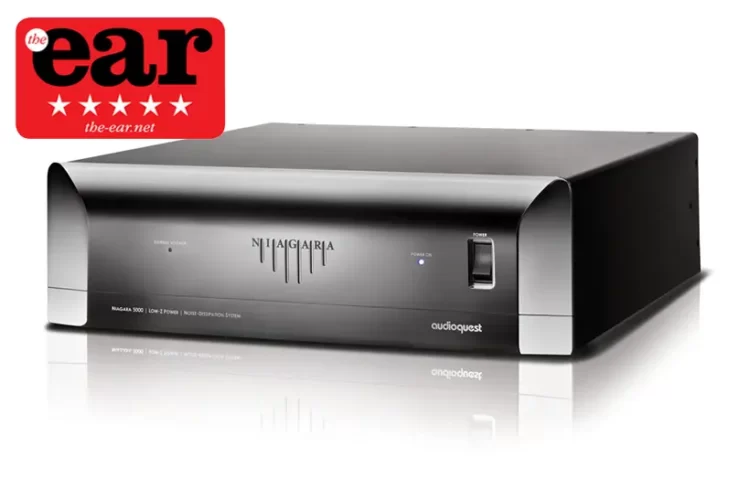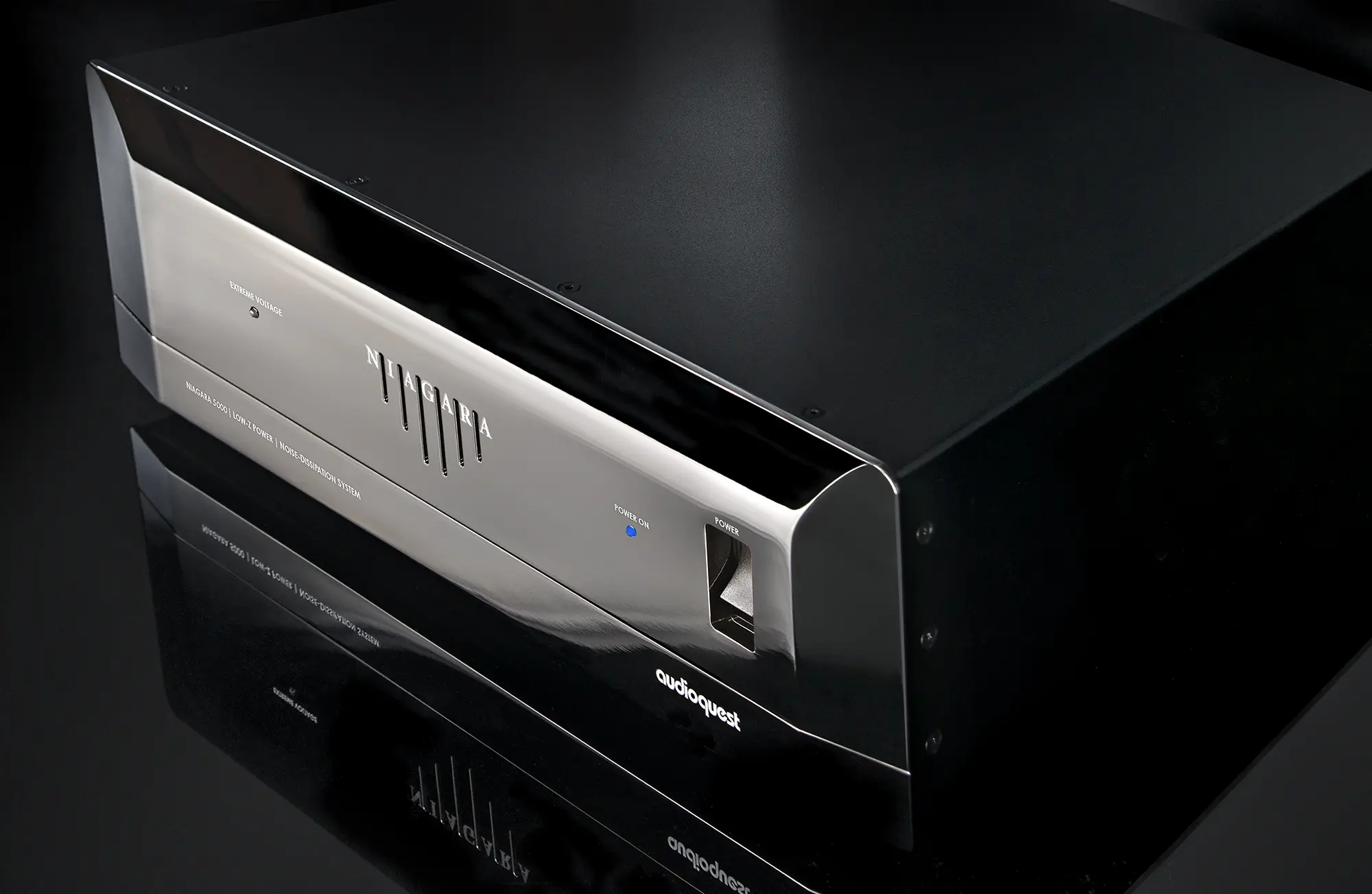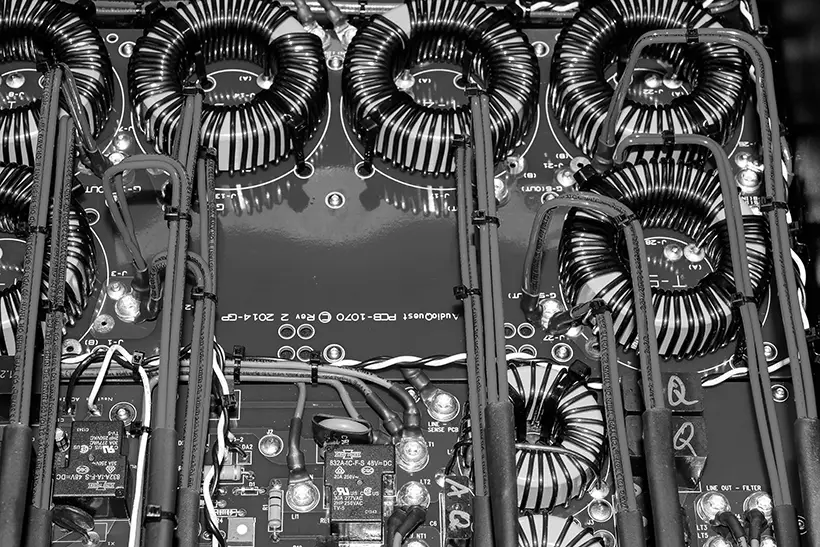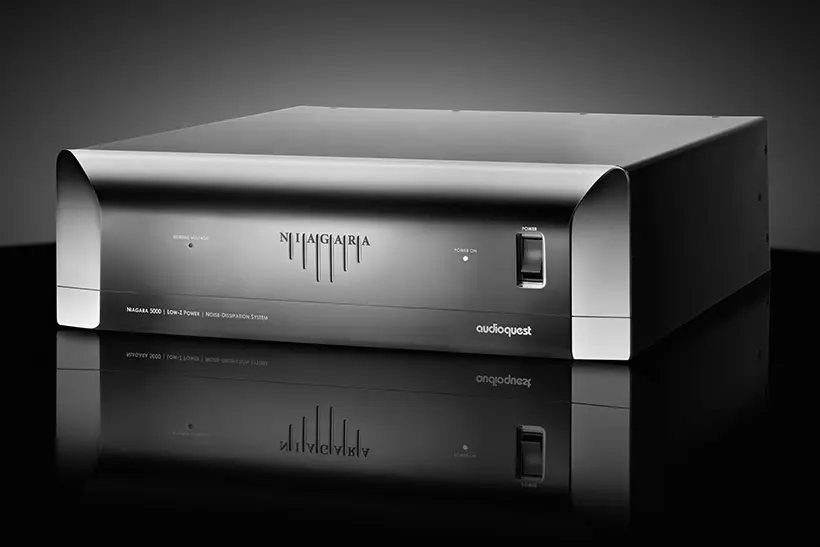AudioQuest Niagara 5000
HARDWARE REVIEWS
Niagara 5000 lets the power flow

Audioquest Niagara 5000 AC power conditioner
Electrical pollution of the mains supply is generally pervasive, and in cities and other locations it may be worse than in rural areas. Noise in the audio band and upwards intermodulates with the music signal in an audio system and leads to poor tonality, muted subtle detail and weak dynamic expression.
Mains conditioners can remove the pollution, but there is a catch: if over-applied the technology commonly used can result in diminished musicality. Therein lies the balancing act that must be performed when designing a mains power conditioner such as Audioquest’s Niagara 5000. The designer must use enough of the cure to improve the sound, but not so much that one evil is swapped for another.
In a straw poll taken while researching this review, it seems that audiophiles generally adhere to one of three mindsets in respect of mains conditioning; either it is not necessary because the impact of mains noise is over-hyped, or they have tried conditioning and did not like the sonic impacts, or they own a conditioner and would not part with it.
For all of us there is a personal journey. For a while mine placed me simultaneously in two of the above categories; mains noise was not a big issue and anyway conditioners made the sound worse. And then I moved house. Swapping an isolated rural idyll for a bustling village, mains noise suddenly became very real and very intrusive. The audio system had moved with me, but it now sounded… not good. Poor tonality? Check. Muted detail? Check. Weak dynamic expression? Check. It took a while to work out what was going on, but the introduction of the first element of a modular mains noise dissipation system improved things to such a degree that the conclusion and logical next steps were inescapable. Later, a comprehensive garden grounding scheme was added, and later still a balanced mains transformer to power the entire dedicated audio mains circuit.

Fast forward, and in order to set the stage for an even-handed evaluation of the Niagara 5000, all of these were temporarily disconnected and the system listened to briefly au-naturel in order to establish a sonic benchmark. The sample Niagara 5000 (£4,990) and mains cables also supplied by Audioquest were then installed. A 2m Hurricane cable (£2,369) was used between the Niagara 5000 and the wall socket, and 2m Monsoon cables (£529) used between the Niagara and the system components.
The price of silence
The obvious first point to note is that the cost of mains conditioning Niagara 5000-style is far from inconsequential. The conditioner plus cable loom for a system with CD, streaming and vinyl front-ends plus a preamplifier and power amplifier will run to some £12,000 even if we opt for the relatively modest grade of cables as supplied for the review. Go for Audioquest’s top mains cables and the comparative aggregate cost rises to some £30,000.
There is wiggle-room here. Existing mains cables can be used between the Niagara and source components, but the cable between the Niagara and the wall socket, says the company, really does need to be an Audioquest model featuring the company’s proprietary Zero and RF/ND technologies in order to support the Niagara’s grounding circuity, more of which shortly.
What’s in the box?
The Niagara 5000 is a sizeable lump, on a par dimensionally and weight-wise with many stereo amplifiers. However, unlike some alternative conditioners which actually do house an amplifier to generate a fresh, theoretically perfect sine wave, the Niagara 5000 is almost entirely passive, just stripping the native mains sine wave of unwanted noise. It does so partly by the deployment of arrangements of LCR mitigation – inductors, chokes, capacitors and resistors that turn common-mode and differential-mode noise into barely-detectable heat. This is prior-art, the kind of meat and potatoes that most alternative conditioners also use. However, there are three notable angles to the Niagara 5000 that merit attention.
The first is that the scale of the LCR network is unusually ambitious, providing more than 23 octaves of differential filtering and 16 octaves of symmetrical mode filtering. The second is that, rather unusually to my knowledge, the Niagara mitigates the inevitable rise in impedance that result from such a network by partnering it with a so-called power correction circuit. This has an active element, but with minimal current draw, and it includes a bank of capacitors able to supply 80 Amps peak for 25 milliseconds. Power amplifiers attached to the Niagara’s three high-current sockets see a low impedance and can pull the instantaneous current they need to cope with musical transients.

The third is that the Niagara addresses noise on the system ground through a patented circuit. It combines low impedance line induction with the directionally oriented mains cable that powers the Niagara to encourage induced RF noise to follow the path of least resistance to earth. The Niagara 5000 also protects attached audio components from voltage surges and spikes with a non-sacrificial active circuit that is a minor current draw.
The Niagara 5000 provides a further eight sockets for constant-current source components. As is common in most conditioners of all makes, all the outlets are designed such that the backwash of noise from, say a poorly-designed switch-mode power supply in one component cannot pollute the power supply for the other connected devices. If we need fewer outlets, we can buy the 5000’s smaller sibling, the Niagara 3000, and if we want more, along with further filtering measures, then there’s the Niagara 7000.
What does it sound like?
Quiet. Impressively so, is the key take-away. Confirming what I already knew – that the mains supply in my village is polluted with all manner of noise – back-to-back playback of a selection of material revealed recorded dynamic, textural and tonal detail that without the Niagara 5000 in place was either absent or partially obscured.
Psycho-acoustics play an interesting role here, in this instance once the listeners’ attention had been drawn to a particular low-level musical event with the Niagara 5000 in place, sometimes the same event could still be discerned with the Niagara removed. It seems that when our brain has heard something once, it remembers what to listen for and can still discern that event even through a fog of noise. But it’s tiring, all that processing by the grey matter, and with the Niagara 5000 in place playback sessions were much more enjoyable and relaxed.

As I have noted before in reviews of alternative approaches here on The Ear, mains conditioning is perhaps the one area of system performance where the results can be most highly variable. A system in one setting might do very nicely, thank you, without conditioning. Move that same system to another setting and it might sound poor due to a higher level of mains noise. Conditioner designers want to achieve a balance when they apply LCR noise reduction techniques, but they cannot control for this high level of variability between settings, and logically therefore their point of balance is centred on worst-case pollution. If a customer has the misfortune to live in a location with a high level of mains noise, then that conditioner is likely to be perceived as bringing valuable gains to audio system performance.
No free lunch
Even so, there is no such thing as a free lunch in audio design, and complexity has a price; by default, inductors ring, capacitors are microphonic, and more LCR conditioning than is required in a given setting can diminish rather than liberate musicality. In a setting where prevailing mains pollution is at a lower level, the introduction of such a conditioner might be short-lived, the sound of the system being preferred without the additional complication.
I can recommend the Niagara 5000. It is thoroughly and thoughtfully designed, with features that go further than most, if not all, of the alternatives. With all mains conditioners though, the mantra of ‘try before you buy’ is highly appropriate.
Specifications:
Type: AC mains power conditioner.
Outlets: 8 constant current, 3 high current 13A UK
Dimensions (H x W x D): 133 x 445 x 437mm
Weight: 19.9kg
Price when tested:
Niagara 5000 £4,990
Hurricane cable 2m £2,369
Monsoon cables 2m £529

